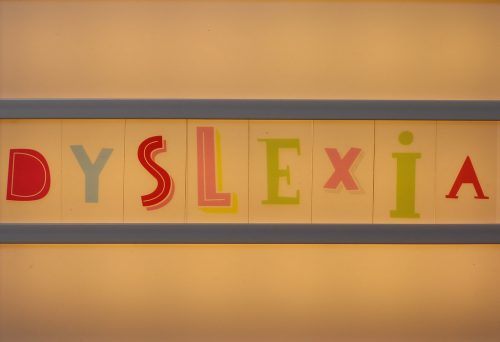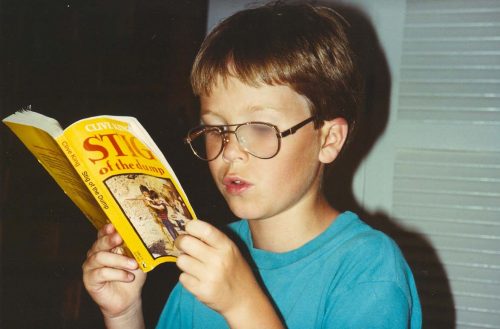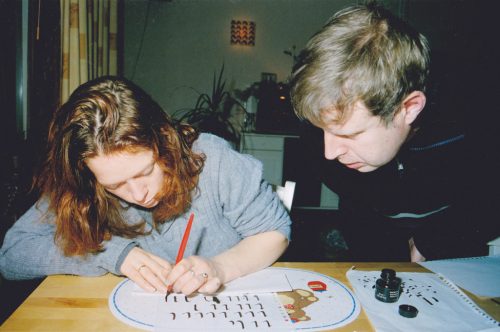Dyslexia is a neurological and often genetic condition that makes it hard to read, and to learn. In the country, between 5 and 15 percent of Americans is dyslexic. Due to this alarming number of patients, therapists are continuously looking for ways to help people with dyslexia cope with the hardships of visual, language-related learning. Currently, there is still no cure for the condition. But the early diagnosis, support, and guidance reduce the impact of dyslexia on the person’s quality of life. According to Margie Gillis, Ed.D. with Eve Kessler, Esq., “Children with dyslexia will not learn what is left unsaid and must be taught in a “programmatically scaffolded” manner, building little by little upon what they have already learned.”

Source: flickr.com
A person with dyslexia has trouble processing written material typically. It is a misconception that dyslexia links to the level of intelligence of a person. “A dyslexic person who has word-finding difficulties can have trouble with their expressive language,” says Scott Bezsylko, the executive director of Winston Preparatory School, which specializes in teaching kids with learning disorders. Though dyslexia at present is considered a learning disorder, people with the condition can be more intelligent than the average person.
There is no clear cut symptom of dyslexia. A person has to go through rigorous testing before a doctor can fully diagnose him with dyslexia. The effects of dyslexia vary. The only shared trait between people who have dyslexia is that they all read at levels generally lower than other people their age.
Symptoms Of Dyslexia
Symptoms of dyslexia can be visible as early as childhood. However, Dr. Matthew Cruger, director of the Learning and Development Center at the Child Mind Institute, suggests waiting until kids are at least six years old and have had some formal instruction in reading to seek out a formal evaluation. If you think your child has dyslexia, visit a therapist right away so you can have a proper diagnosis. Young children with dyslexia often have trouble learning nursery rhymes, recognizing rhyme patterns, mispronounce familiar words, and have difficulty learning and remembering the names of letters in the alphabet.
Adults with dyslexia carry with them the reading difficulties they experienced in early childhood. An adult living with dyslexia might have fine-tuned his reading skills over the years, but the activity still takes considerable time and effort to accomplish. They struggle to retrieve words, frequently experiencing episodes of “at the tip of my tongue.”
Complications of dyslexia can lead to several problems, mainly: difficulty in learning, social issues, and other related problems in adulthood.

Source: en.wikipedia.org
Children who have dyslexia are also at risk of developing other related conditions, such as attention-deficit/hyperactivity disorder (ADHD). In individuals with ADHD, hyperactivity and impulsive behavior makes it difficult to sustain attention, making dyslexia harder to treat.
Treatment Of Dyslexic Individuals
Compensatory strategies help individuals cope with dyslexia as they go about their daily activities. Early diagnosis and treatment also contribute to how much dyslexia affects the individual as he grows older.
Teaching individuals afflicted with the condition requires patience, and complete understanding of dyslexia and what it is. Individuals with dyslexia need a systematic approach that builds on previously learned skills, slowly, one skill set at a time. Instructions must be individually given and precisely tailored to each, addressing each person’s unique abilities and the challenges that they face.
Currently, treatment for dyslexia includes specific instructional techniques and developmental learning approaches. You should first undergo proper diagnosis and psychological testing to determine which aspect of learning you have the most difficulty dealing with. From there, you can employ specific learning techniques by your therapist and the tutor that matches your needs and helps you in the particular area of learning you need it the most.
Teachers may use techniques that involve touch, vision, and hearing to improve their skills in reading. A useful method that tutors employ is exercises that involve using multiple senses at a time. It helps the individual respond better and helps significantly with the processing of information simultaneously. Experts refer to this method as multisensory instruction.
Multisensory instruction also grants patients to over-learn material through repetition and using the learned skill in different contexts.

Source: commons.wikimedia.org
Regardless of approach and the materials used, all learning sessions with a licensed therapist and a tutor answer directly to the needs of the individual. Since no dyslexic symptom and condition are the same, learning strategies and coping mechanisms, have to be explicitly tailored to the person suffering from it.
You should also engage in reading tutor sessions with a reading specialist. In people with severe dyslexia, slow progress is standard, though tutor sessions need to be more frequent than the usual number of sessions an average dyslexic patient has in a week.
Another treatment option you can try is assistive technology for reading, such as audiobooks and the use of text to speech software.
There is no known way to correct the underlying brain abnormality in dyslexic individuals. It is a lifelong condition that needs to be dealt with to not interfere mainly in the quality of life of the dyslexic individuals. Therapists and licensed tutors can employ numerous educational techniques to aid individuals with dyslexia with their learning disabilities.